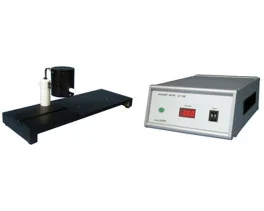Authors
J. Yoo, J.-J. Seo, J.-H. Eom, D.-Y. Hwang.
Lab
CHA University, College of Natural Science, Department of Biomedical Science, Seoul, Korea.
Journal
Neuroscience
Abstract
Endogenous stromal cell-derived factor 1_ (SDF1_) has been implicated in postischemic tissue repair, suggesting SDF1_ as a potential therapeutic molecule to treat stroke patients. In spite of its potential, no data are available regarding the short- and long-term effects of SDF1_ when it is delivered at different phases of stroke. In our study, adenovirus expressing SDF1_ gene (AV-SDF1_) was introduced into the boundary of the infarcted area either 3 days before or 1 week after ischemia, and behavioral performance was measured over 5 weeks. Immediate behavioral and structural amelioration was evident when AV-SDF1_ was injected 3 days before ischemia, which might be the result of SDF1_-mediated neuroprotection as supported by the TUNEL staining and Western blot analysis of active caspase-3. In addition, increase in neurogenesis, neuroblast migration, and neural differentiation was also apparent in the AV-SDF1_-injected brain, which contributed to further amelioration at later time points (delayed response). On the contrary, when AV-SDF1_ was introduced 1 week post-ischemia (in the subacute phase), significant behavioral recovery became apparent beginning 5 weeks after viral delivery. Taken together, the therapeutic efficacy of SDF1_ varied considerably depending on when SDF1_ overexpression was initiated; initiating SDF1_ overexpression before ischemia exerted both immediate and delayed beneficial effects, whereas initiating overexpression in the subacute phase exerted only a delayed response.
BIOSEB Instruments Used:
Aron Test or Four Plates Test (LE830),Rotarod (BX-ROD)

 Pain - Thermal Allodynia / Hyperalgesia
Pain - Thermal Allodynia / Hyperalgesia Pain - Spontaneous Pain - Postural Deficit
Pain - Spontaneous Pain - Postural Deficit Pain - Mechanical Allodynia / Hyperalgesia
Pain - Mechanical Allodynia / Hyperalgesia Learning/Memory - Attention - Addiction
Learning/Memory - Attention - Addiction Physiology & Respiratory Research
Physiology & Respiratory Research












![Dynamic Weight Bearing 2.0 – Postural Module [Add-on]](https://bioseb.com/733-home_default/dynamic-weight-bearing-20-add-on-postural-module.jpg)























 Pain
Pain Central Nervous System (CNS)
Central Nervous System (CNS) Neurodegeneration
Neurodegeneration Sensory system
Sensory system Motor control
Motor control Mood Disorders
Mood Disorders Other disorders
Other disorders Muscular system
Muscular system Joints
Joints Metabolism
Metabolism Cross-disciplinary subjects
Cross-disciplinary subjects CONFERENCES & MEETINGS
CONFERENCES & MEETINGS 